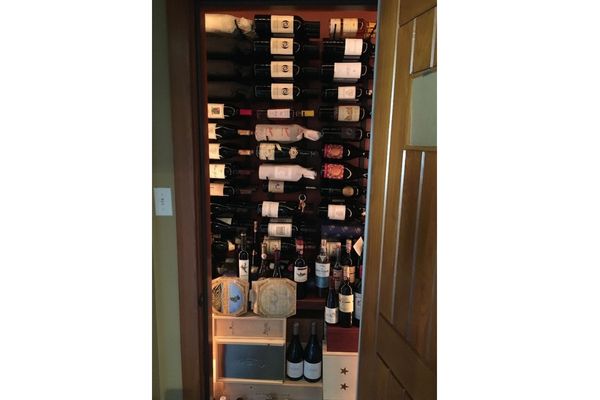Blood in the streets? Wine in the cellar is more like it.
America and much of the Western world are on the cusp of another recession. And this recession could be a doozy, given the rate of inflation that both the U.S. and Europe are struggling with, and the over-eagerness with which central banks are attacking inflation after originally thinking it was nothing to worry about.
But to warp a clichéd phrase: Every dark cloud has a silver…chalice overflowing with really good wine.
What I am getting at here is this: Back amidst the Great Recession in 2007-2009, exceptional opportunities arose in the collectible wine market. I know because I was exploiting those opportunities.
See, when economies weaken and job losses—and fears of job losses—litter the landscape, consumers reflexively rein in their spending. In the world of high-end, collectible and investment-grade wines, that means aficionados stop buying from exclusive, mailing-list-only wineries…which means the wineries drop them off the list and replace them with buyers who are on the waiting list.
But many of those on the waiting list don’t buy either.
All of which means that those who have the liquidity suddenly have the chance to buy some of the very best, most exclusive wines in America. Wines produced in such small quantities that the only viable way of selling them is through mailing lists of each winery’s super-fans.
I still remember in 2008 when an email arrived announcing that I’d progressed from waiting list to active buyer for a Napa Valley winery known as Scarecrow. It’s one of the original “cult California Cabernets,” meaning that the only place to buy it is from the winery itself and by invitation only.
Demand for Scarecrow is so great that the waiting list is years long. I’d joined the list a year or two earlier after ghostwriting a book on investment-grade wines for a well-known wine merchant.
I jumped at the chance to buy my allotment of a few bottles—and your allotment will only ever be a few bottles.
I did the same for Hundred Acre, Bryant Family, Colgin Cellars, Harlan Estate, and several others—all part of the cult Cali wine roster. These are the U.S. equivalent of high-end French Bordeaux such as Pape-Clement, Petrus, Lafite-Rothschild, Le Gay, and others.

I continued to buy yearly, for a decade, until my divorce forced changes in that plan.
I was buying not to drink the wines, but to hold them as investments. And as investments they did exceptionally well.
At a post-divorce auction in New York, Hundred Acre bottles that cost me about $150 each were selling for $750. My Scarecrow, bought about $200 each, were going for $1,100 or more.
That’s the way it routinely goes with investment-grade wine—buy them on release from the winery, hold them for five years or more, and regularly collect very nice gains at resale or auction.
The reason this happens with regularity is that high-end restaurants are forever looking for high-end wines because they don’t have enough room (or the time commitment) to buy newly bottled wines and allow them to age, which is what high-end wines demand.
Instead, they rely on investors to buy those wines, store them properly, and then put them up for auction when the wines are 5 to 10 years old—the sweet spot.
We are effectively their warehouse. We are the ones who store the bottles and allow them to properly age before they’re ready to see the inside of a wine glass.
Restaurants pay up for that service.
Which is why going into a recession is such a great opportunity to be an investor in high-end wines. As financially fearful buyers stop buying, you have the chance to land on the active-buyer list, giving you access to wines that are almost certain to rise in value because the demand is pretty much insatiable.
You don’t even need to have a cellar to properly store the wines (and they must be properly stored). You can rent space at a number of Napa-area wine-storage facilities and have your wines delivered directly there. And when it comes time to sell, just have the storage facility deliver your wines directly to the auction house. So convenient.
In the years after my divorce, I fell off every list because I stopped buying as I moved around the world and as I rebuilt my financial life. But recently, I’ve rejoined the mailing list for a baker’s dozen of high-end cult Cali Cabernet wineries—the ones I mentioned above and a few others. If my name pops up amid the coming recession, I will once again be a buyer of these wines.
They’ll all go into storage at a facility I once used in northern California, All Ways Cool.
And several years later, I will start sending them to auction because I know they will be worth much more than I paid for them.
Not signed up to Jeff’s Field Notes?
Sign up for FREE by entering your email in the box below and you’ll get his latest insights and analysis delivered direct to your inbox every day (you can unsubscribe at any time). Plus, when you sign up now, you’ll receive a FREE report and bonus video on how to get a second passport. Simply enter your email below to get started.
